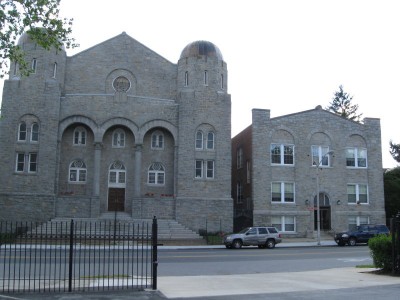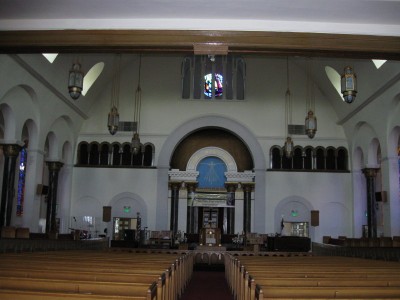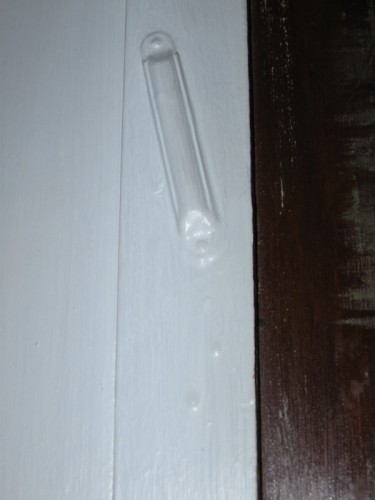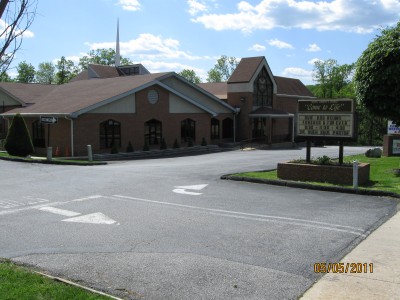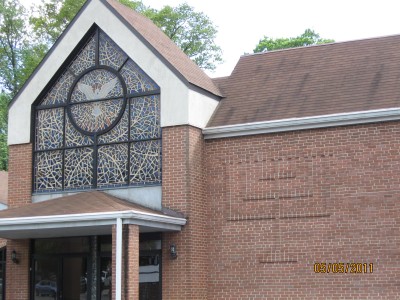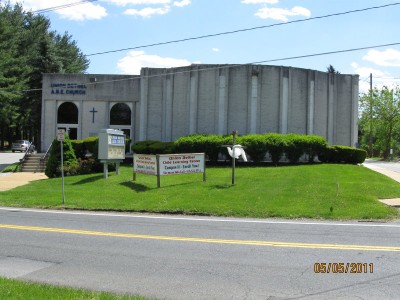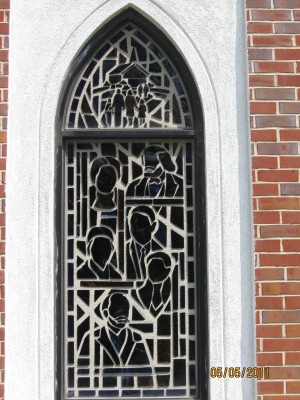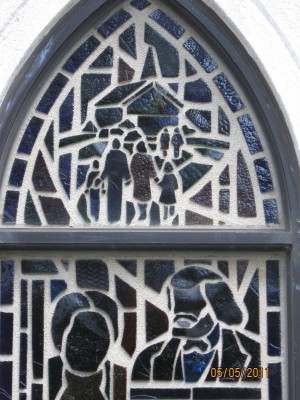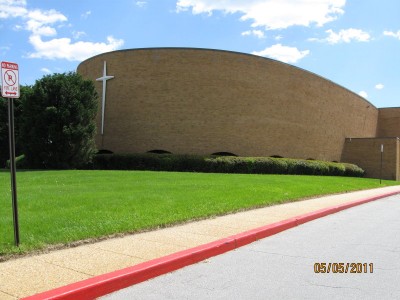A Sentimental Journey
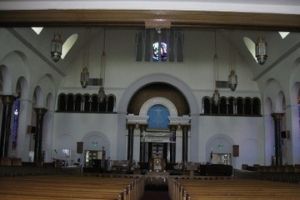
 Sometimes I can’t help not get personally invested in some of the programs that we have at the Jewish Museum of Maryland and this past Tuesday’s program, In Each Other’s Shoes: African Americans and Jews Sharing Spaces and Perspectives: Past, Present and Future was no exception.
Sometimes I can’t help not get personally invested in some of the programs that we have at the Jewish Museum of Maryland and this past Tuesday’s program, In Each Other’s Shoes: African Americans and Jews Sharing Spaces and Perspectives: Past, Present and Future was no exception.
The program featured a panel discussion that was moderated by Neil Rubin, editor of the Baltimore Jewish Times. The panel included Rabbi Andy Busch of Baltimore Hebrew Congregation, Rev. Charles T. Sembly, Pastor at Union Bethel AME in Randallstown and a Morgan State University architectural student, Kordae Henry. Rabbi Busch spoke about his own congregation’s connection with the Mount Olive Baptist Church and how both congregations currently share space at Baltimore Hebrew due to a fire at the church a few years ago. Pastor Sembly spoke about his congregation’s long history (since 1826) and how their current home on Church Lane in Randallstown (a former synagogue) was adapted to suit the needs of the church. Kordae Henry, an architecture graduate student at Morgan, displayed his senior project and spoke about the plans that he designed for a synagogue near the entrance of Druid Hill Park complete with a Matisyahu Social Hall and The Shofar education wing.
In order to prepare for this program, I thought we needed to have some sort of presentation to give an overview and examples of how former synagogues are now the homes to African-American churches. I did some research through the JMM’s own collections, and we decided to take a field trip through Baltimore and back to my own stomping grounds in Randallstown, Maryland to find some of these buildings.
We started our search not far from the museum and we drove to 1901 Madison Avenue which was the former home to Baltimore Hebrew Congregation after they left the Lloyd Street address. BHC occupied the building from 1891-1951 and moved to it present home on Park Heights Avenue. Berea Temple acquired the building in 1950 and in 1976; the building was designated as a national landmark and recorded as such in the National Registry of Historical Sites with the U.S. Department of the Interior.
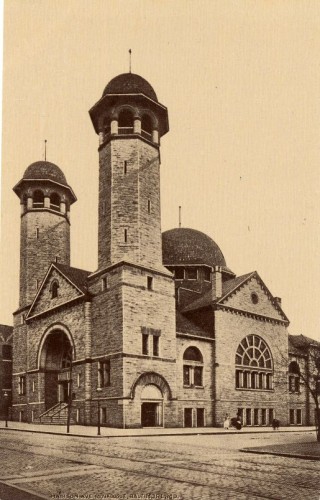
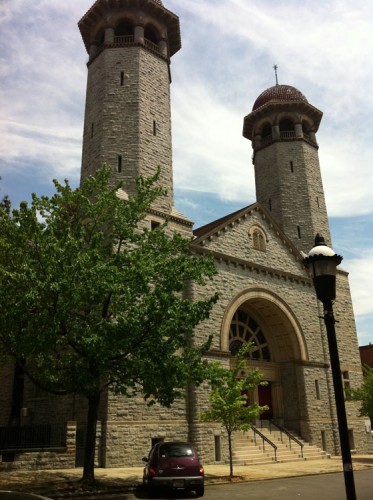
From there we went to the Forest Park neighborhood and saw the Beth Tfiloh Synagogue that was built on Fairview Avenue and Garrison Boulevard. My own family is steeped in Beth Tfiloh’s history as my grandparents were early members of the congregation, my father became a Bar Mitzvah there in 1939 and my parents were married in the building in 1951. We had the opportunity to go inside the building which is now the Wayland Baptist Church. I got chills when I walked inside the sanctuary and realized how much of my own family’s history took place in the building.
From Beth Tfiloh, we drove along the Liberty Road corridor to see how the synagogues buildings that I remembered as a kid– looked like today.
Bnai Jacob started at 543 West Baltimore Street and later moved to Christian Street in 1908. In 1957, the site was purchased at Liberty Road and Patterson Avenue. In 1973 the building was defaced with Nazi slogans and a Ku Klux Klansman was convicted for conspiring to bomb the building. Today, the building is home to the Christian Life Church.
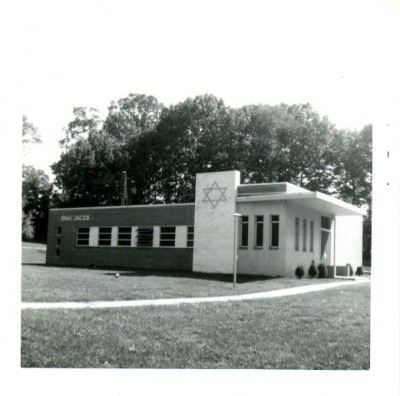
Liberty Jewish Center was a synagogue located on Church Lane and a lot of my friends that I went to school with attended services here. Today, the building is home to Union Bethel AME, a church that has roots in Randallstown since 1826. I loved the stained-glass windows that are currently on the building.
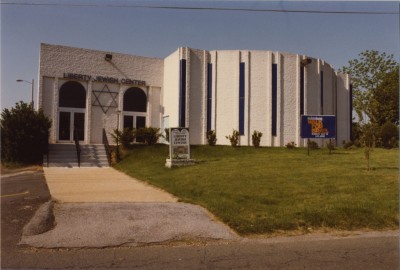
Finally, the last place that we went to was Beth Israel-Mikro Kodesh that was located closest to my childhood home in Hernwood Heights. All of the Jewish kids in my neighborhood attended this congregation and I remember the candelabrum that was on the outside of the building. Today, the building is home to Colonial Baptist Church.
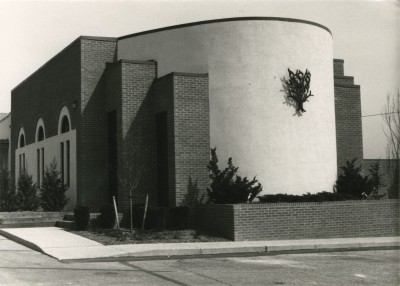
We took over 75 pictures of buildings that were former synagogues and are now homes to African-American churches. We just saw a smattering of the buildings around the city… I look forward to another field trip to document more.
A blog post by Program Director Ilene Dackman-Alon.

